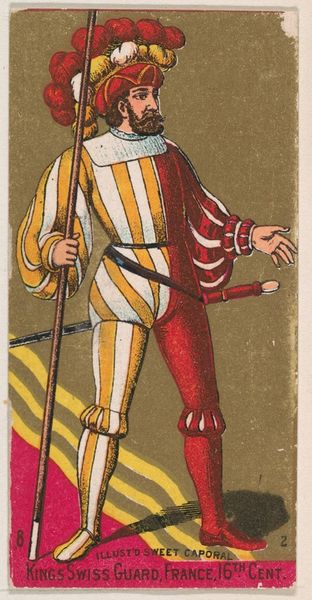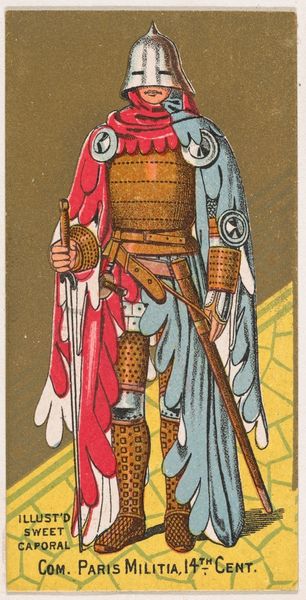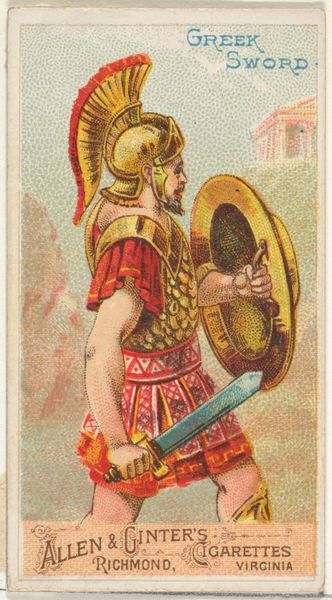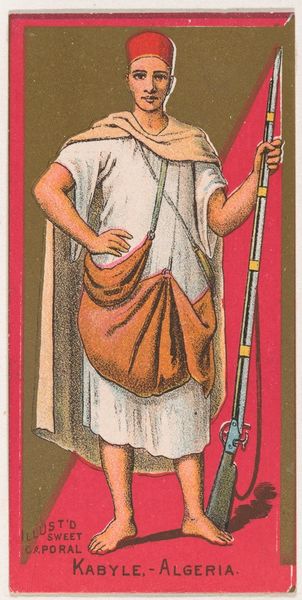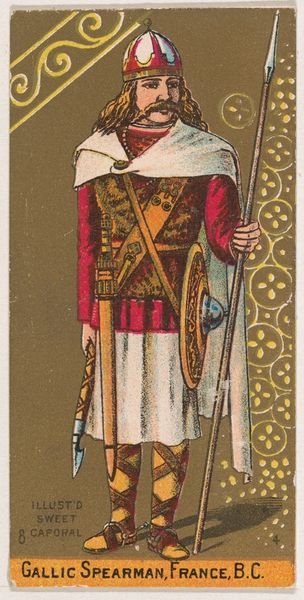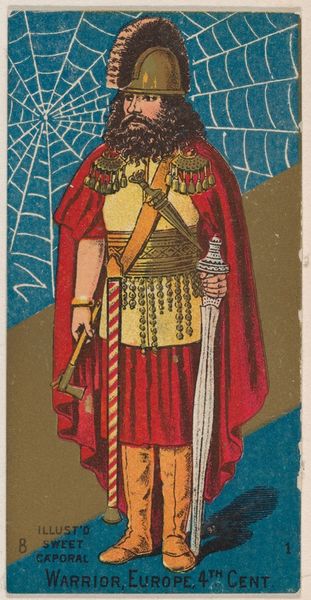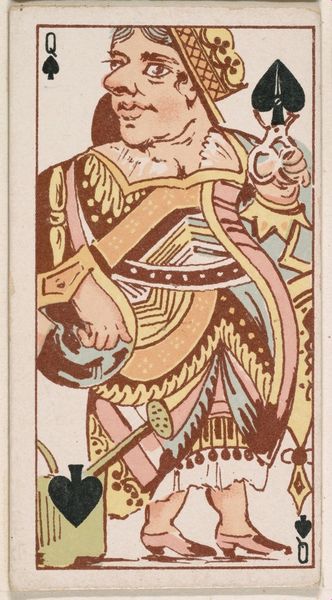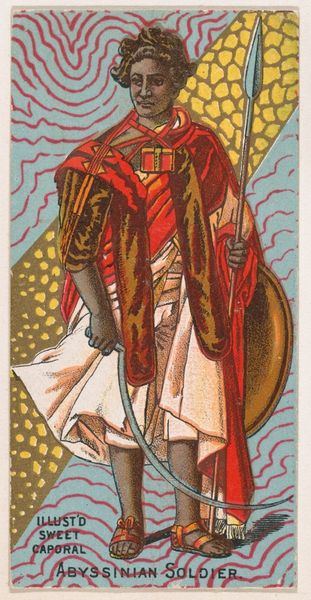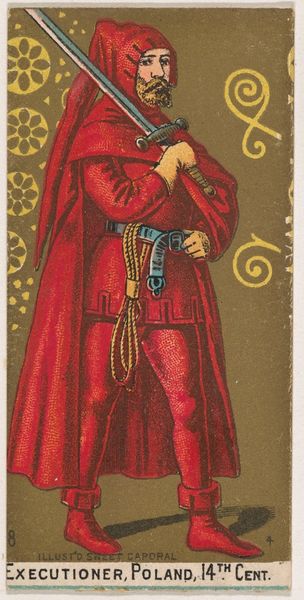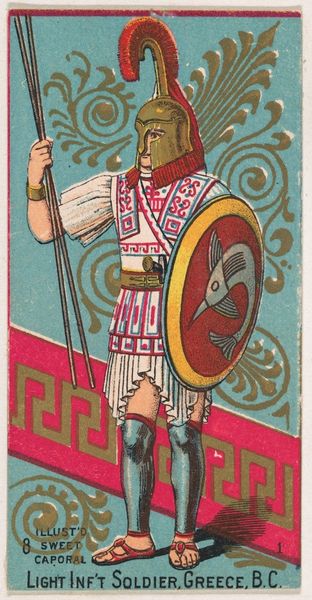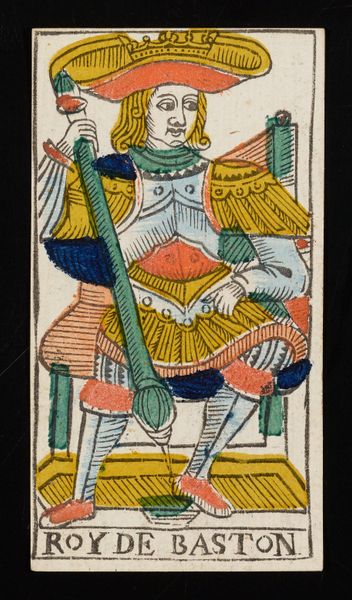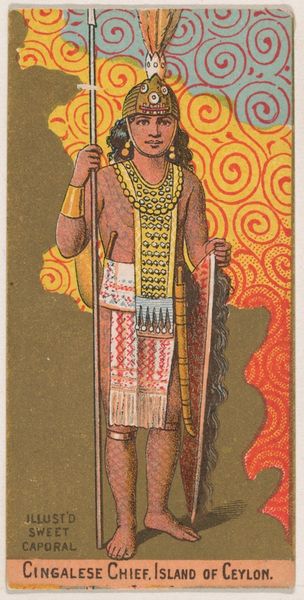
Chief, Island of Borneo, from the Military Series (N224) issued by Kinney Tobacco Company to promote Sweet Caporal Cigarettes 1888
0:00
0:00
#
portrait
# print
#
caricature
#
naive art
#
orientalism
#
men
#
watercolour illustration
Dimensions: Sheet: 2 3/4 × 1 1/2 in. (7 × 3.8 cm)
Copyright: Public Domain
Curator: Here we have "Chief, Island of Borneo" from the Military Series, dating to 1888, created by the Kinney Tobacco Company to promote Sweet Caporal Cigarettes. Editor: The immediate impression is of bold color amidst the backdrop's repeated tessellating pattern; there’s something strikingly direct and unsubtle about it. Curator: Yes, it is rather overt in its visual language. This miniature portrait relies on established Orientalist tropes, presenting an image intended to resonate with the consumer base through what they imagine to be 'exotic.' We see signifiers of status—the headdress, spear, ornate necklace, and even the patterned loincloth. Editor: Interesting. It’s printed on a flimsy card. Makes me think about mass production. What was the print process? Given its function as advertising, I’d expect photolithography, making image distribution fairly efficient and cost-effective for that period. How does its production speak to labor practices at Kinney? Were the artists trained? Curator: Those choices reveal a lot about intended audience perception at the time. What this image *signifies* is critical. The figure of the 'Chief' is designed to evoke ideas of power, perhaps untamed exoticism, all filtered through the lens of colonial imagination, and of course to entice customers. It serves as a collectible reinforcing existing colonial narratives. Editor: The watercolor gives the impression of craft, handmade quality, a strange contrast considering it was created industrially on a huge scale to sell tobacco. Were consumers aware of that inherent contradiction? Did this create dissonance? This artwork and its mass dissemination offer crucial insights into the intertwined history of material culture, colonialism, and nascent consumerism. Curator: The visual symbols do invite interpretation, though often those imposed upon the represented rather than inherent. It asks us to reflect on the narratives being circulated then. It highlights the colonial gaze inherent in the portrayal, the commodification of cultures and the stereotypes reinforced. Editor: Thinking of it that way reveals that beyond surface appeal, "Chief, Island of Borneo," reflects manufacturing, labor, and distribution that produced cultural stereotypes for profit, shaping our understanding even today.
Comments
No comments
Be the first to comment and join the conversation on the ultimate creative platform.

